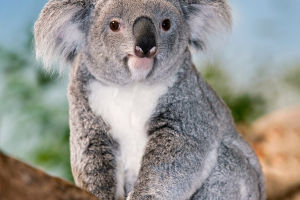Hummingbirds are fascinating creatures with remarkable migratory patterns and unique adaptations that contribute to their survival and behavior.
In North America, most hummingbirds migrate south in the fall to spend the winter in Mexico, the Caribbean Islands, or Central America. Conversely, during the southern winter, some southern South American species also migrate northward to the tropics.
However, a few species, such as the Ruby-throated hummingbird, can be found as residents in Florida, California, and the desert regions of the far southwest of the United States throughout the year.
Ruby-throated hummingbirds, for instance, breed in Ontario, Quebec, and northern Atlantic Canada during the summer and return to Mexico, South America, and parts of Texas and Florida during the winter.
In southern Louisiana, a variety of hummingbird species can be observed during the winter months, including the black-chinned, pale yellow, abdominal, small bagpipes, Allen's, Anna's, ruby-throated, reddish-brown, broad-tailed, and broad-billed hummingbirds.
Among these species, the reddish-brown hummingbird holds a unique position as it breeds further north than any other species. It often breeds in temperate North America and increasingly winters in the subtropical Gulf of Mexico and along the Florida coast, rather than in western or central Mexico.
This ability to roost further north and tolerate occasional below-freezing temperatures in breeding areas demonstrates their hardiness and adaptability, provided they have adequate shelter and food.
Scientists have extensively studied hummingbird behavior and have identified martial combat as a widespread behavior among these birds. However, there are still some aspects of hummingbird life that remain unknown to researchers.
The close match between nectar-laden flowers and the slender beaks of hummingbirds suggests a product of synergistic evolution. This implies that the evolution of the hummingbird's appearance has been influenced significantly by the need for reliable pollination intermediaries and the evolution of flowers that require specific pollination methods.
Observing hummingbirds in flight reveals their extraordinary metabolic rate, which is abnormally fast compared to other birds. They can hover and move with incredible agility, often outmaneuvering insects in flight.
Hummingbirds possess the fastest metabolism among all birds, making them highly efficient foragers. Additionally, hummingbirds are the only birds capable of flying backward. This unique ability is due to their wing shape and the rotation they can achieve, enabling them to fly in any direction and maintain stability.
This flight capability is shared only with certain flying insects.
The slender bill of hummingbirds is perfectly adapted for harvesting nectar, and it follows the evolutionary need dictated by the shape of nectar-producing flowers.
Hummingbirds can move vertically or horizontally while remaining aligned with their axis, a maneuver that many believe only hummingbirds can accomplish. This capability arises from their ability to rotate and invert their wings, providing them with excellent flight capabilities.
Hummingbirds exhibit a wide range of sizes, with the smallest species found in Cuba measuring a mere 5 centimeters in length. In contrast, the largest known species can reach up to 25 centimeters. These variations in size contribute to their status as the smallest birds in the world.
In addition to their remarkable flight and behavior, hummingbirds possess distinct plumage. Their bright and intense colors give them the appearance of little phosphorescent dots, adding to their enchanting allure.
Hummingbirds captivate us with their migratory journeys, unique adaptations, and mesmerizing flight capabilities. These tiny birds demonstrate the intricate relationship between plants and animals, serving as important pollinators while evolving to fulfill the mutual needs of flowers and themselves.
Observing hummingbirds in action is a testament to the marvels of nature and the remarkable diversity found in our world.


